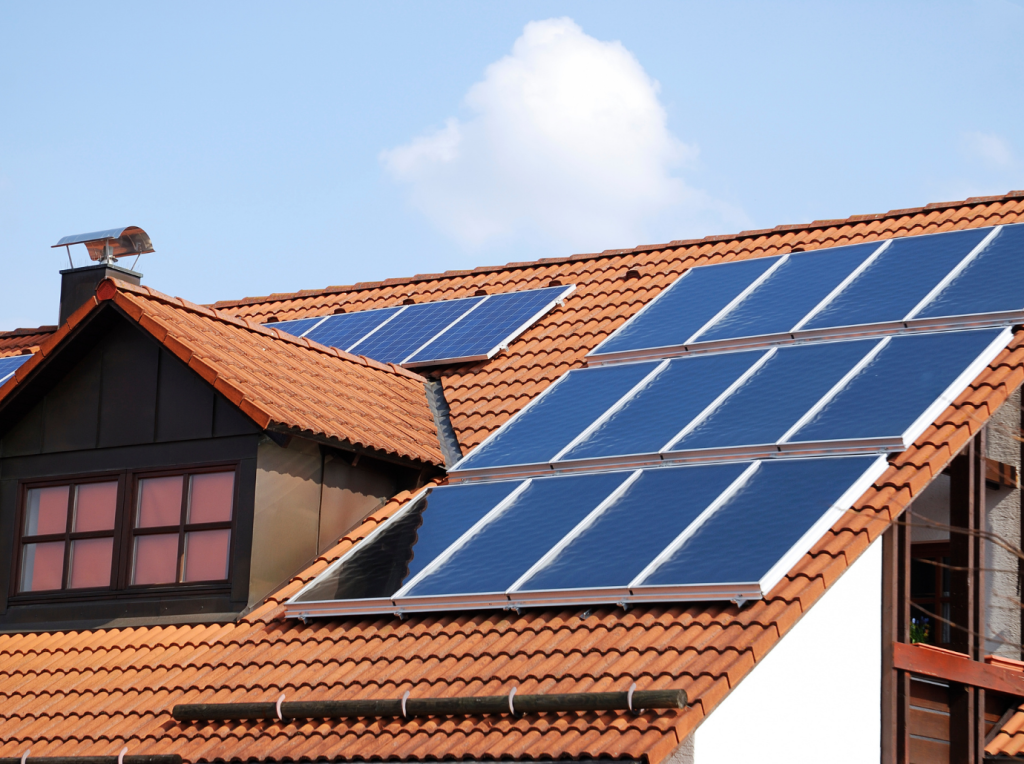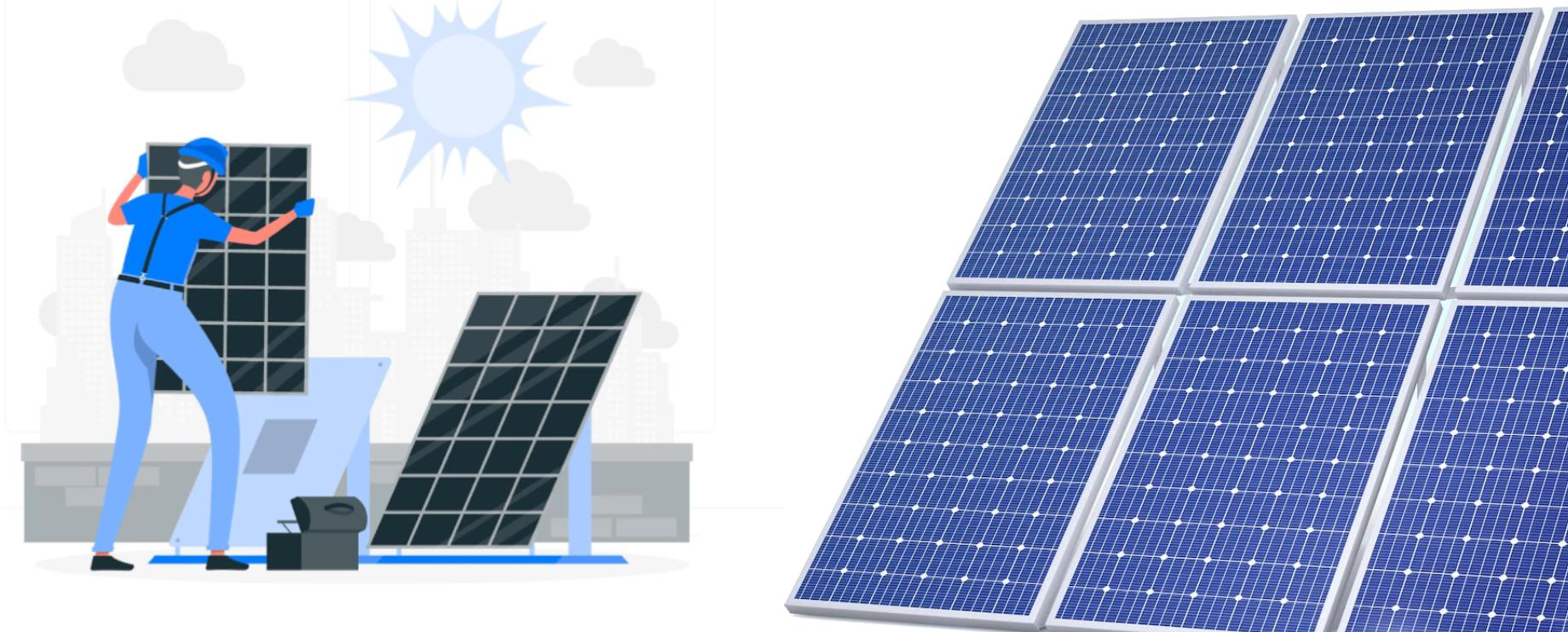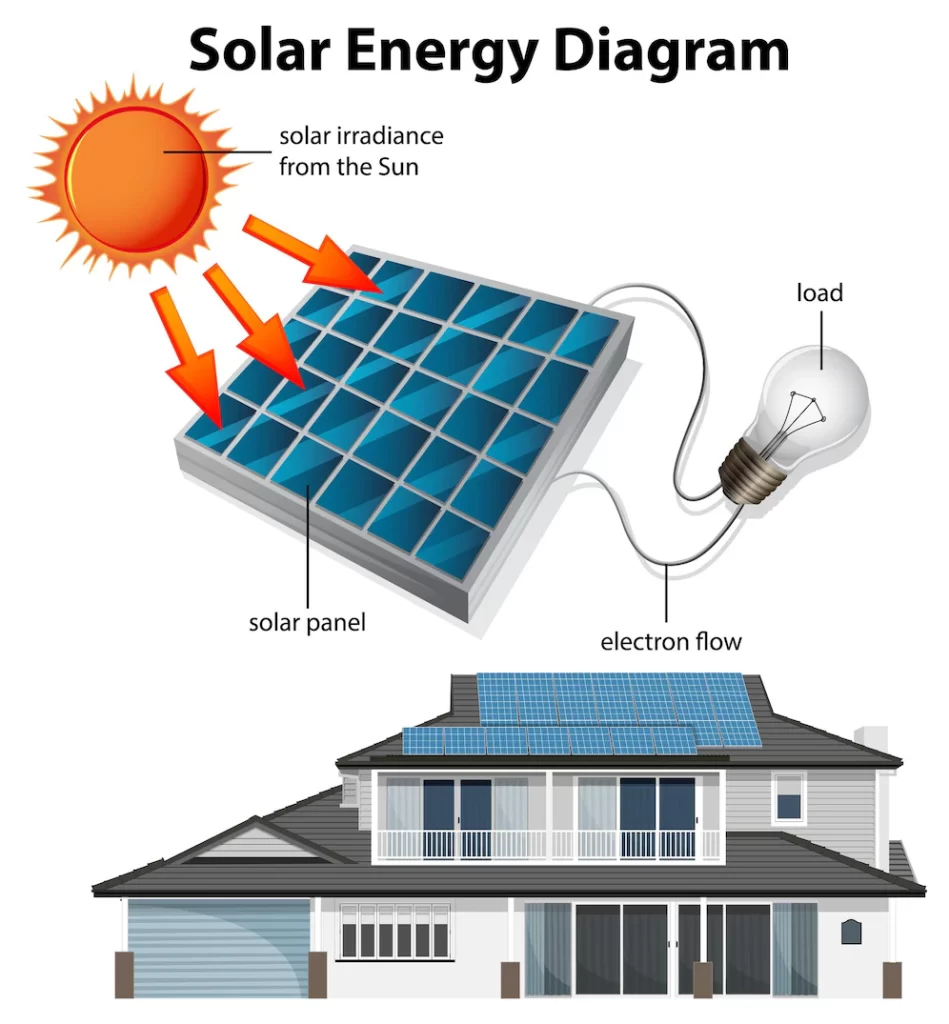
Solar panel installation is more than choosing a brand; it starts with the correct size. That initial decision will determine […]

So, you’ve heard about solar panels but aren’t sure what they really are.
Don’t worry; we’ve got you covered. Solar panels are among the most exciting green technologies out there today, and they can help you save money and conserve the environment at the same time.
In short, solar panels are devices that absorb the sun’s energy and convert it into electricity that you can use to power your home or business.
Also read: Can I Install Solar Panels For Free?
The solar cells in the panels absorb the photons from the sun and convert them into energy you can use. It’s a win-win situation where you get to cut down your electricity bills and reduce your carbon footprint.
Next, we’re going to dive into the details of how solar panels work, their different types, their costs, and available incentives.
With this knowledge, you can decide whether they’re right for you. Ready to learn the ins and outs of solar power? Let’s get started!
Solar panels convert the sun’s rays into electricity using photovoltaic cells. But how do these panels actually work?
The cells in solar panels contain silicon, a semiconductor that absorbs the photons (light particles) from sunlight. When the photons hit the silicon, they knock electrons loose from their atoms.
This creates free electrons and holes (positively charged spaces) that flow in opposite directions.
The flow of electrons and holes creates an electric current. Metal plates in the cells collect the current and transfer it out of the panel as direct current (DC) electricity.
Most homes and buildings use alternating current (AC) power, so an inverter is needed to convert the DC power from solar panels into AC power that can be used in homes or fed back to the grid.
The inverter syncs the power to the frequency of the grid so you can use the power directly or store any excess in batteries.

Solar panels work best when pointed directly at the sun, so installers usually mount them at an angle.
Panels with cells that absorb light from all angles, like those made of amorphous silicon, don’t require precise angling.
Tracking mounts that follow the sun throughout the day can increase energy capture by up to 25% compared to fixed mounts.
Also read: How Many Solar Panels Do I Need?
The two most common types of solar panels are crystalline silicon and thin film. Crystalline panels are the most efficient, converting 15-20% of the sunlight into electricity.
Thin film panels are lighter, more flexible, and cheaper to produce but are less efficient, only converting 5-13% of sunlight.
Also read: 6 Reasons Why Homes With Solar Panels Sell Faster
These panels are made of silicon wafers and are the most popular. Monocrystalline panels have the highest efficiency of around 15-20% but are the most expensive.
Polycrystalline panels are a bit cheaper but slightly less efficient at around 13-16% efficiency. Both types of crystalline panels will last around 25-30 years.
These panels are made of amorphous silicon, cadmium telluride, or copper indium gallium selenide. They’re lightweight, flexible, and cheaper but less efficient than crystalline silicone panels, converting only 5-13% of sunlight into energy.
Their lower efficiency also means you need more space for the same power output. Thin film panels typically last 15-20 years.
The components that make up a solar panel are relatively simple, yet ingeniously designed to harness the sun’s energy.
Related Reading: What Are Solar Panels Made of?
The heart of any solar panel is the silicon cells. These cells contain silicon wafers made of crystalline silicon, the second most abundant material on Earth.
When sunlight hits the cells, the energy knocks electrons loose from their atoms, allowing them to flow through the material to produce electricity. The more cells in a panel, the more energy can be produced.
The silicon cells are mounted within a sturdy metal frame, usually aluminum.
The frame helps keep the cells in place while also protecting them from the elements. It includes a glass or plastic cover that allows light to pass through to the cells while protecting them from wind, rain, and snow.
The junction box is where the power from the individual cells gets collected and converted into usable AC power for your home or the power grid. Wires from the cells are connected to circuit boards in the junction box, which then connect to your home’s electrical system or the grid.
Also read;
Some solar panels also have diodes to prevent energy from flowing backwards, as well as bypass diodes to ensure energy can flow around any cells that may become shaded.
They also often have grounding wires for safety. The panels are mounted on racks, which are installed on rooftops or the ground and angled towards the sun.
The cost of solar panels can vary significantly depending on the size of your system and the components used. The good news is that the price of solar panels has dropped over 70% in the last decade, making solar energy more affordable and accessible than ever before.
The size or kilowatt capacity of your solar panel system will be the biggest factor impacting the total cost. The average residential system in the U.S. is between 3 to 8 kilowatts (kW), with a typical cost ranging from $10,000 to $25,000 after tax incentives.
A smaller 1 to 3 kW system would be good for a small home or to offset a portion of your electric bill. Such a system costs between $5,000 to $12,000.
If you want to go big and power your home and possibly an electric vehicle too, then you need an 8 to 15 kW system which costs $20,000 to $30,000 or more.
Superior components like higher-efficiency panels, enhanced or lithium-ion battery storage, and microinverters tend to cost a bit more upfront but can improve performance and power more of your home.
Standard efficiency panels and string inverters will do the job for a lower cost, but in this case, you might require a larger system size to meet your needs.
Installation costs include fees for permits, labor, wiring and racking equipment. Installation typically adds an additional $3,000 to $5,000 per kW to the total system cost.
Some installers or solar companies will bundle components and installation together for an all-inclusive price.
Federal tax incentives like the Solar Investment Tax Credit (ITC) can reduce the cost of going solar by 26% of the total system cost. Some states and utilities also offer additional rebates, tax exemptions or renewable energy credits (RECs) to offset costs.
These incentives significantly improve the return on investment for a residential solar panel system.
There you have it: a deep dive into the world of solar panels. By now, you should have a solid understanding of how solar panels work to convert the sun’s energy into electricity you can use in your home.
While the technology may seem complex, solar panels are actually simple devices that have been around for decades.
Also read: Are Solar Panels Worth It? Here Are 6 Benefits Of Solar Power
The exciting part is how much more efficient and affordable they have become, opening solar power to homeowners and businesses everywhere.
If you’ve been on the fence about going solar, hopefully, this information has helped you see what an innovative and practical solution it can be to reduce your energy bills and environmental footprint.
The future is bright for solar, so why not join the movement and start harnessing the sun’s energy today?